Introduction
I came across a social media post about someone who wanted to drink green tea for its health benefits, but couldn’t get over its “bad taste”. I followed the origin of the thread to Reddit, where people guessed whether green tea’s “off taste” for that person may be genetic, like the taste of cilantro. While that can be the case (i.e. genetic sensitivity to a compound called 6-n-propylthiouracil, which is found in some flavonoids), others touched on whether it was because the person was making tea using supermarket green tea bags rather than loose tea, whereas a few people hit on the complexity of the issue. In this post, I will discuss some of the factors that affect whether your green tea has a pleasant or “off taste”, because after all, green tea should be something you actually enjoy and not only drink for its health benefits.
NOTE: The first part of this article is some personal details of my experience learning to prepare multi-ethnic food and beverages, and the second part of the article is specifically about the preparation of green tea and its health benefits.
Once a Foodie, Always a Foodie
I have been adventurous in trying different kinds of food and beverages since I was little, and I remember my parents taking me to an authentic Japanese restaurant even as a kid.
As a teen, I enjoyed cooking multi-ethnic food and learned authentic Cantonese cooking in the 1970s when my mom took a course in Chinatown. In the 1980’s, I learned authentic Thai cooking from a friend of a family business associate who was from Thailand, and in those days, one couldn’t buy pre-made Thai curry pastes that are available everywhere now. I sourced the raw ingredients in Lao-Thai groceries and hand-pounded them myself in a mortar and pestle (that I still own and use), and I have recipe books sent to me from Thailand.
It didn’t matter whether it was Asian, Middle Eastern or Jamaican; I was a bit of a purist, wanting the ingredients and cooking method to be as authentic as possible. For me, the best way to find out how to make something was to ask someone from that culture who loved to cook.
What was true about food was also true for beverages.
I couldn’t just enjoy a cup of coffee or a glass of wine without knowing more. Whether it was the origin of the coffee beans, the length of time the beans were roasted, or how long the water is in contact with the beans, I needed to know, and I was interested in such things when it was not popular either.
Before “West Coast coffee” was a thing and before there ever was Starbucks® or Peet’s, there was a place called La Vieille Europe on St. Laurent Blvd in Montreal, which was where I got my single-origin, whole bean coffee. As I found out years later, the son of the roaster who owned that store taught the original roaster from Peet’s in the US how to roast beans. Small world.
When I lived in wine country (Sonoma County) of California for a few years in the early 2000s, I was determined to educate my palate to distinguish between different types of wine, which I did. I knew what I liked — which turned out to be an expensive habit when I returned to Canada after 9/11. At the beginning, I explored the wines of Australia and found some I really liked, but missed the delicious and inexpensive wines of Sonoma and Napa.
Once again, my palate returned to coffee, but finding a decently roasted coffee in Vancouver BC was harder than I thought. Given that this was the “West Coast”, I was discouraged how difficult it was to find good quality Arabica beans that weren’t over roasted. I stumbled across a few small roasters that did an excellent job, but in time they modified their roasts for “local tastes”, so once again, I was back looking for a new roaster. On a few occasions, I ordered from La Vieille Europe in Montreal because in the 40 or 50 years they have been in business, they never lost their passion for properly roasted, single origin coffee.
Over the 20 years I have lived in Vancouver, I discovered the world of quality tea that is largely unknown to most non-Asian-born Chinese. There was one excellent tea importer in Chinatown that I knew of and one that is still in the Richmond Public market that have single origin estate teas that rival the diversity of the best coffee roaster. Over the past 20 years, I’ve explored different types of tea from China and have come to like a few; my favourite of which is a fermented tea known as Pu-ehr.
Some years ago, I stumbled across matcha tea in a specialty Japanese store before it was a “thing”. Knowing nothing about it, I have since found out that I had been using ‘culinary matcha‘ (designed for making Japanese sweets) for drinking. No wonder it tasted bitter, and I needed to blend it with other ingredients to make it palatable. Thankfully, when fresh, it had the same health benefits, which I wrote about in 2013 in this article about the Role of Green Tea Powder (Matcha) in Weight and Abdominal Fat Loss. As you’ll read below, I have since learned about making and enjoying real ceremonial-grade matcha, which is intended for drinking from large matcha bowls.
Learning about Japanese Green Tea
At the beginning of this year, I began to explore green teas from Japan when I discovered Hibiki-An, an online tea importer from the Uji region of Kyoto. My culinary world expanded once again.
Unable to decide between the many different types and grades of tea that they carry, I order a sampler of 3 types of green teas (Sencha, Gyokuro Superior and Sencha Fukamushi). They came in 4-oz individual bags — the quantity that can reasonably be used up within 3 months, when it is fresh. All 3 teas were all of “superior” grade, which is not the best quality (as my palate is not developed yet), but is a high-grade tea.
When the tea arrived, it came with very specific brewing instructions (a summary of the much more detailed instructions on their web page). I’ve since learned that different types of green tea require different water temperatures and different lengths of brewing time.
Wow, who knew?
For “cooling” the water to just the right temperature, there is a yuzamashi, which is a small ceramic cup with a spout that the boiled water gets poured into to cool momentarily before being poured into the kyuzu; a special tea pot with a single handle, built-in mesh filter and large opening for the water (see photo, above).
You don’t need to get fancy, though. I had these things for years from my days exploring different regional teas, but one can use an ordinary bowl to cool the water and any plain ceramic teapot to brew the tea in!
Tea to Water Ratio, Water Temperature and Steeping Time
Each type of green tea has a very specific ratio of green tea leaves to water, and very specific water temperatures and steeping times.
For example, of the three teas in my sample set, Sencha is brewed at 80° Celsius (176 ° Fahrenheit) for one minute, Gyokuro is brewed at 60-70 ° Celicus (140-158° Fahrenheit) for 1 -1/2 to 2 minutes and Sencha Fukamushi is brewed at the same temperature as regular Sencha, but for only 40-45 seconds.
I’ve discovered that following these guidelines using good quality, fresh tea leaves makes a cup of tea that is like nothing I’ve tasted anywhere before. It is not simply snobbery, but the science of what makes for a good cup of tea.
Note: I downloaded several studies that have researched the difference in brewing time, water to tea leaf ratio and water temperature but have decided against boring anyone with the details.
Recently, I became ready to move on to “real” matcha tea and ordered some from the same supplier in Japan.
It came in tiny cans (quantities that should be used up in a 3-week period).
The colour was a bright jade green and the taste had no hint of bitterness whatsoever!
It tastes amazing!
My teas ordered from Japan are my “weekend teas,” and during the week, I drink run-of-the-mill Sencha purchased locally at a Japanese store.
I drink them because I like them and for the health benefits.
Health Benefits of Green Tea
The health benefits of green tea are many. Several large-scale population studies have linked increased green tea consumption with significant reductions in the symptoms of metabolic syndrome, a cluster of clinical symptoms which include insulin resistance and hyperinsulinemia (high levels of circulating insulin), Type 2 Diabetes, high blood pressure, and cardiovascular disease, including coronary heart disease and atherosclerosis.
Catechins make up ~ 30% of green tea’s dry weight, of which 60—80% are catechins. Oolong and black tea, which are produced from partially fermented or completely fermented tea leaves contains approximately half the catechin content of green tea.
It is believed that epigallocatechin gallate (EGCG), which is the most abundant catechin in green tea, actually mimics the action of insulin, which has positive health effects for people with insulin resistance or Type 2 Diabetes [Kao et al].
EGCG also lowers blood pressure almost as effectively as the ACE-inhibitor drug, Enalapril, having significant implications for people with hypertension (high blood pressure) and cardiovascular disease [Kim et al].
Green tea catechins also have benefits for weight loss. A 2009 meta-analysis of 11 green tea catechin studies found that subjects consuming between 270 to 1200 mg green tea catechins/day (1 — 4 tsp of matcha powder per day) lost an average of 1.31 kg (~ 3 lbs) over 12 weeks with no other dietary or activity changes [Hursel].
Drinking 8-10 cups of green tea per day is enough to increase blood levels of EGCG into a measurably significant range [Kim et al], but matcha contains 137 times greater concentration of EGCG compared to green tip tea [Weiss et al].
WARNING TO PREGNANT WOMEN. While EGCG has also been found to be similar in its effect to etoposide anddoxorubicin, a potent anti-cancer drug used in chemotherapy [Bandele et al], high intake of polyphenolic compounds during pregnancy is suspected to increase the risk of neonatal leukemia. Bioflavonoid supplements (including green tea catechins) should not be used by pregnant women [Paolini et al].
Green Tea Shouldn’t Taste Bad!
The reason someone would find green tea has an “off flavour” was because the tea was either not fresh, not of a half-decent quality, was brewed at the wrong temperature or for the wrong length of time. Think about it this way; it all a person ever drank was cheap, pre-ground coffee, they might think coffee tasted bad, too.
The fact is, one doesn’t need to order tea from Japan to enjoy a decent cup of green tea! I found the green teas below at a local Japanese grocery store, and when brewed properly, they are great as everyday tea.
If you aren’t adventurous enough to explore ethnic markets or time is limited, I can highly recommend the online supplier I mentioned above as having excellent prices for the quality of green tea, very good explanations on their web page and quick delivery.
For everyday use, I have a little water cooler (yuzamashi) bowl and a small single-handed tea pot (kyuzu), so brewing a decent quality sencha green tea (my daily tea of choice) has become second nature, but as I mentioned above, one doesn’t need special equipment to make a decent cup of green tea! All you need is the right amount of fresh, good-quality tea leaves steeped for the right length of time in hot water that’s at the right temperature. The only thing to keep in mind is that once the package of tea is opened, it needs to be stored in a sealed, airtight, light-proof container and used up within 3 months or sooner.
Making a good cup of green tea is not really much different than brewing a good cup of coffee. To make a good cup of coffee, one needs to consider the country/countries of origin of the beans, the bean roasting time and temperature, the brewing method involved (drip, espresso, French press, etc), the required water temperatures needed for that method, and the different grind of beans and a specific water-to-ground-bean ratio required for that brewing method. It sounds complicated, but if you have a few types of coffee regularly, it’s not hard.
It’s the same with green tea.
In one sense, there is a lot to learn at first to make a good cup of green tea but on the other hand, once you know a few basics and find a green tea or two you really enjoy, the rest is easy!
Tea has amazing health benefits, but unlike the cough medicine Buckley’s®, there is no need to drink tea that “tastes terrible, but it works”!
More Info
If you would like more information, you can learn about me and the Comprehensive Dietary Package that I offer.
To your good health!
Joy
You can follow me on:
Twitter: https://twitter.com/jyerdile
Facebook: https://www.facebook.com/BetterByDesignNutrition/
Copyright ©2019 BetterByDesign Nutrition Ltd.
LEGAL NOTICE: The contents of this blog, including text, images and cited statistics as well as all other material contained here (the ”content”) are for information purposes only. The content is not intended to be a substitute for professional advice, medical diagnosis and/or treatment and is not suitable for self-administration without the knowledge of your physician and regular monitoring by your physician. Do not disregard medical advice and always consult your physician with any questions you may have regarding a medical condition or before implementing anything you have read or heard in our content.
References
Gayathri Devi A, Henderson SA, Drewnowski A. Sensory acceptance of Japanese green tea and soy products is linked to genetic sensitivity to 6-n-propylthiouracil. Nutr Cancer. 1997;29(2):146-51 [https://pubmed.ncbi.nlm.nih.gov/9427978/]
Hursel R, Viechtbauer W, Westerterp-Plantenga MS. The effects of green tea on weight loss and weight maintenance: a meta-analysis. Int J Obes (Lond) 2009;33:956—61. [https://pubmed.ncbi.nlm.nih.gov/19597519/]
Paolini, M, Sapone, A, Valgimigli, L, ”Avoidance of bioflavonoid supplements during pregnancy: a pathway to infant leukemia?”. Mutat Res 527 (1—2): 99—101. (Jun 2003) [https://pubmed.ncbi.nlm.nih.gov/12787918/]
Kao YH, Chang MJ, Chen CL, Tea, Obesity, and Diabetes, Molecular Nutrition & Food Research, 50 (2): 188—210, February 2006 [https://onlinelibrary.wiley.com/doi/abs/10.1002/mnfr.200500109]
Kim JA, Formoso G, Li Y, Potenza MA, Marasciulo FL, Montagnani M, Quon MJ., Epigallocatechin gallate, a green tea polyphenol, mediates NO-dependent vasodilation using signaling pathways in vascular endothelium requiring reactive oxygen species and Fyn, J Biol Chem. 2007 May 4;282(18):13736-45. Epub 2007 Mar 15. [https://pubmed.ncbi.nlm.nih.gov/17363366/]
Weiss, DJ, Anderton CR, Determination of catechins in matcha green tea by micellar electrokinetic chromatography, Journal of Chromatography A, Vol 1011(1—2):173-180, September 2003 [https://pubmed.ncbi.nlm.nih.gov/14518774/]
Joy is a Registered Dietitian Nutritionist and owner of BetterByDesign Nutrition Ltd. She has a postgraduate degree in Human Nutrition, is a published mental health nutrition researcher, and has been supporting clients’ needs since 2008. Joy is licensed in BC, Alberta, and Ontario, and her areas of expertise range from routine health, chronic disease management, and digestive health to therapeutic diets. Joy is passionate about helping people feel better and believes that Nutrition is BetterByDesign©.
“In October 2019, I began my food addiction recovery and weight loss journey with Joy, and after recently rereading the post that I wrote for her website in May 2021, I was overwhelmed with gratitude.”





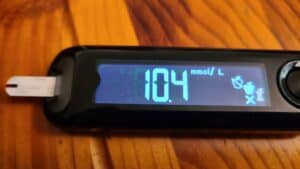

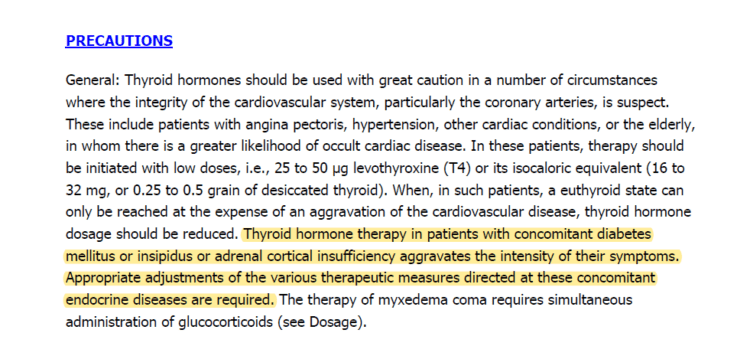
 I knew something was wrong. For several months, I assumed my exhaustion and joint pain were carry-over effects from Covid. But a photo taken just before the wedding told me it had to be something else. Gradually, I went from looking fit after losing 55 pounds to looking like I had regained everything. I later found out it wasn’t fat, but an accumulation of
I knew something was wrong. For several months, I assumed my exhaustion and joint pain were carry-over effects from Covid. But a photo taken just before the wedding told me it had to be something else. Gradually, I went from looking fit after losing 55 pounds to looking like I had regained everything. I later found out it wasn’t fat, but an accumulation of  This past weekend was my second son’s wedding, and the difference is incredible. Instead of medical compression stockings and orthopedic shoes, I wore regular dress pumps. While it will still take time for the mucin to fully resolve, my face and legs no longer look swollen and “inflated.” I felt human again and wasn’t self-conscious in family photos.
This past weekend was my second son’s wedding, and the difference is incredible. Instead of medical compression stockings and orthopedic shoes, I wore regular dress pumps. While it will still take time for the mucin to fully resolve, my face and legs no longer look swollen and “inflated.” I felt human again and wasn’t self-conscious in family photos.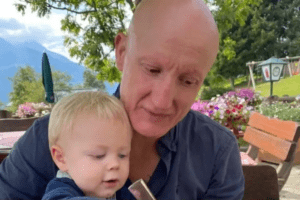
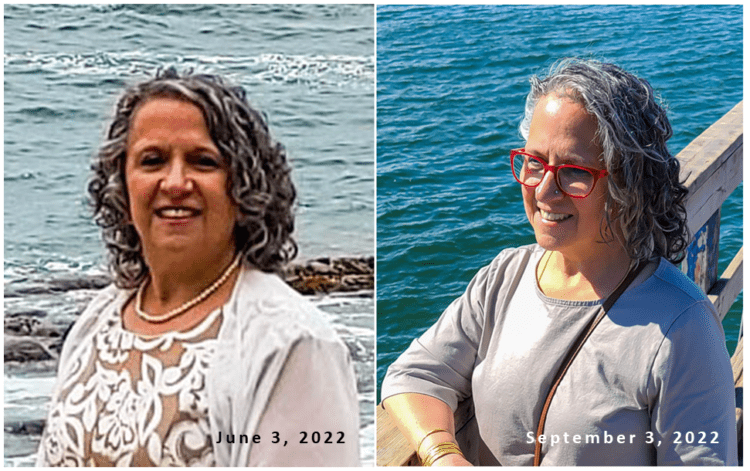
 It has been recommended that to reverse significant hair loss due to telogen effluvium, one should maintain
It has been recommended that to reverse significant hair loss due to telogen effluvium, one should maintain  Food sources include Brazil nuts, with just 2 nuts meeting the daily requirement of 200 mcg. Other sources include mushrooms, eggs, and fish such as cod and halibut.
Food sources include Brazil nuts, with just 2 nuts meeting the daily requirement of 200 mcg. Other sources include mushrooms, eggs, and fish such as cod and halibut. Good sources of zinc include red meat, poultry, and seafood such as oysters, crab and lobster. It is important to be tested first to know if there is a zinc deficiency before taking a supplement, as excess zinc can reduce copper levels.
Good sources of zinc include red meat, poultry, and seafood such as oysters, crab and lobster. It is important to be tested first to know if there is a zinc deficiency before taking a supplement, as excess zinc can reduce copper levels. Naturally good sources of Vitamin D include fatty fish such as salmon, mackerel, and tuna.
Naturally good sources of Vitamin D include fatty fish such as salmon, mackerel, and tuna.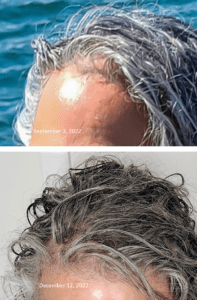
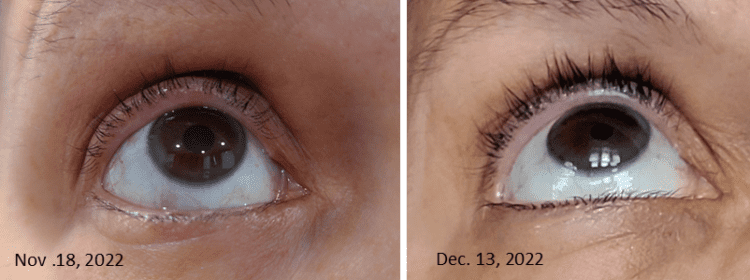
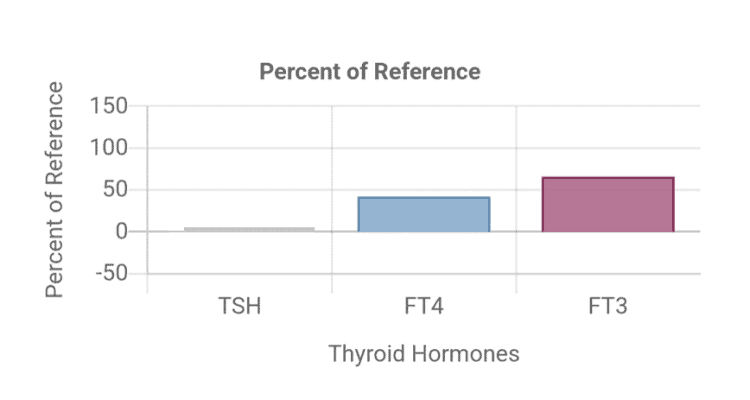
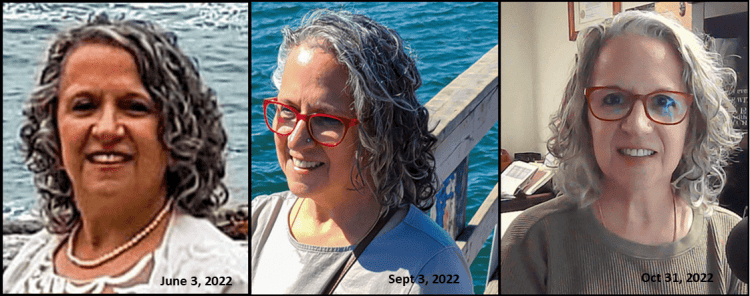
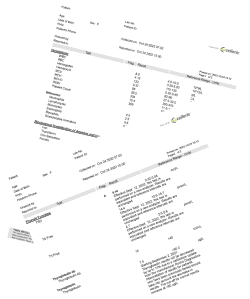

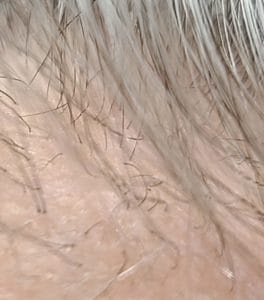 Telogen effluvium – is the most common form of diffuse hair loss [7]. It usually occurs after a profound stress, shock or traumatic event including after childbirth, as the result of a thyroid disorder, as well as rapid weight loss. It has been reported after a sudden and significant calorie restriction diet (“crash dieting”) [8], and has also been reported associated with the popularized ‘keto’ diet [9,10], but I am in agreement with Dr. Stephen Phinney of Virta Health that it should not occur in a well-designed keto diet [11].
Telogen effluvium – is the most common form of diffuse hair loss [7]. It usually occurs after a profound stress, shock or traumatic event including after childbirth, as the result of a thyroid disorder, as well as rapid weight loss. It has been reported after a sudden and significant calorie restriction diet (“crash dieting”) [8], and has also been reported associated with the popularized ‘keto’ diet [9,10], but I am in agreement with Dr. Stephen Phinney of Virta Health that it should not occur in a well-designed keto diet [11].  In telogen effluvium, hair often comes out in clumps in the shower, or in a brush [6]. Loss is usually from all over the scalp, but may occur more on the temples, the part and the crown of the head [7]. Once the cause telogen effluvium is removed, regrowth will usually begin within two to six months [6].
In telogen effluvium, hair often comes out in clumps in the shower, or in a brush [6]. Loss is usually from all over the scalp, but may occur more on the temples, the part and the crown of the head [7]. Once the cause telogen effluvium is removed, regrowth will usually begin within two to six months [6].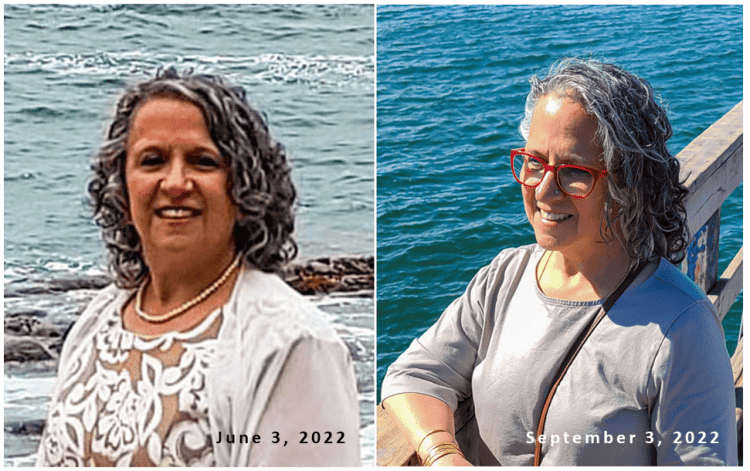
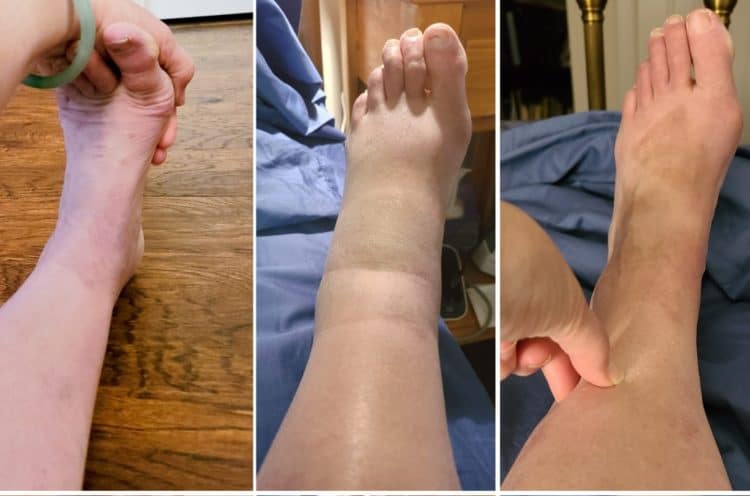
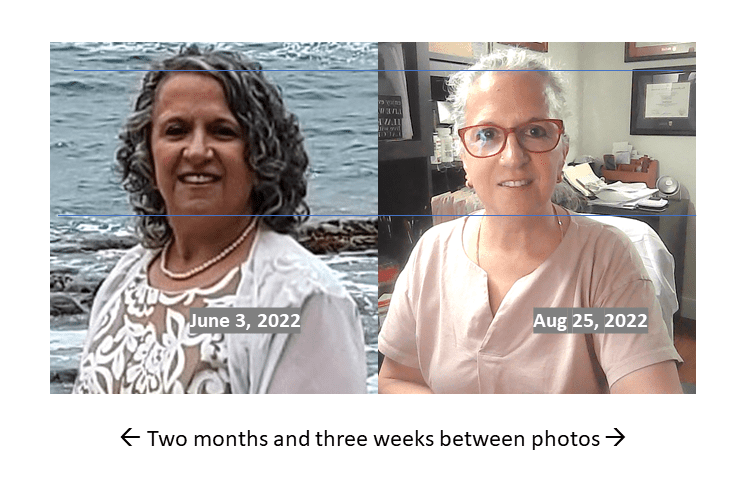
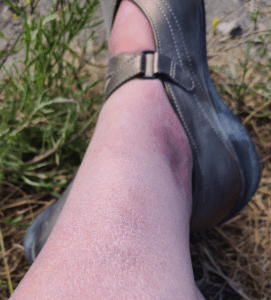
 He had no idea that I was hiking in North Vancouver and Golden Ears Provincial Park for several hours at a time last summer. I knew that it was abnormal for me to feel so exhausted and for my muscles to feel so weak, and one look in the mirror told me something was very wrong.
He had no idea that I was hiking in North Vancouver and Golden Ears Provincial Park for several hours at a time last summer. I knew that it was abnormal for me to feel so exhausted and for my muscles to feel so weak, and one look in the mirror told me something was very wrong.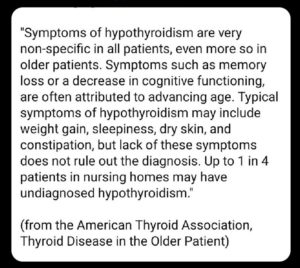

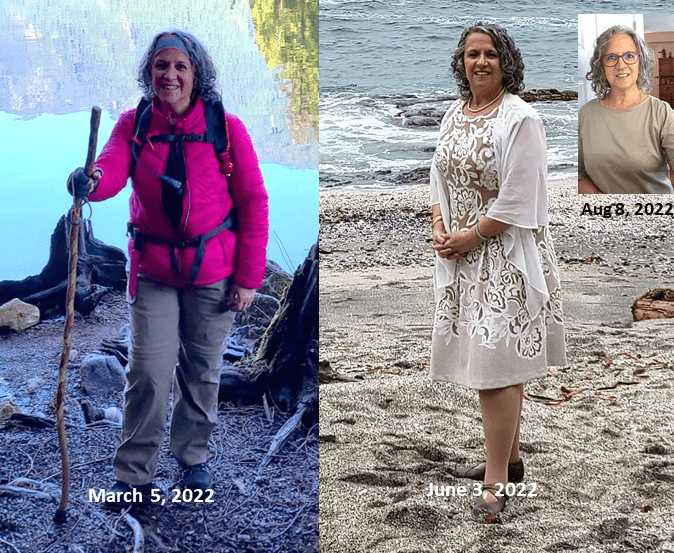
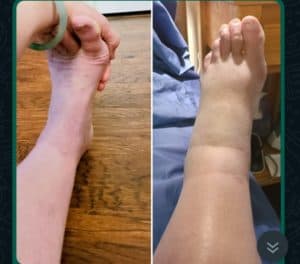
 Two years after beginning my journey, I had lost a total of:
Two years after beginning my journey, I had lost a total of: Then we took up hiking! Four years earlier, I could barely walk and talk at the same time, and for six months, I was hiking every week or two. This photo was taken last year on March 6, 2021 — the 4th anniversary of beginning my journey.
Then we took up hiking! Four years earlier, I could barely walk and talk at the same time, and for six months, I was hiking every week or two. This photo was taken last year on March 6, 2021 — the 4th anniversary of beginning my journey.
 I have lost well over a 100 pounds, and am a normal body weight and a waist circumference. I am so thankful for my weight loss, and my improved physical health. Even more importantly however, my depression has been significantly better, and I am truly enjoying life. In addition, my ADHD symptoms have greatly decreased, and my mental capacity has significantly improved.
I have lost well over a 100 pounds, and am a normal body weight and a waist circumference. I am so thankful for my weight loss, and my improved physical health. Even more importantly however, my depression has been significantly better, and I am truly enjoying life. In addition, my ADHD symptoms have greatly decreased, and my mental capacity has significantly improved.
 In April 2019, Karen private messaged me on social media and sent me a photo of herself, after she had lost 150 pounds. It was both delightful and very rewarding to receive this from a client and to see that she had continued to apply what she had learned and was doing exactly what she set out to do. She permitted me to share it on social media with only her first name and the initial of her last name, which I did. All people knew was that this was what one client had accomplished in a year.
In April 2019, Karen private messaged me on social media and sent me a photo of herself, after she had lost 150 pounds. It was both delightful and very rewarding to receive this from a client and to see that she had continued to apply what she had learned and was doing exactly what she set out to do. She permitted me to share it on social media with only her first name and the initial of her last name, which I did. All people knew was that this was what one client had accomplished in a year. Last week, instead of private messaging me an update, Karen decided to post a compilation photo of herself under one I had posted of myself on Facebook. Even though I had not spoken to her in over a year, there was her picture for everyone, including me, to see! Wow!! Karen had lost more than 200 pounds and had every reason to be proud of her accomplishment!
Last week, instead of private messaging me an update, Karen decided to post a compilation photo of herself under one I had posted of myself on Facebook. Even though I had not spoken to her in over a year, there was her picture for everyone, including me, to see! Wow!! Karen had lost more than 200 pounds and had every reason to be proud of her accomplishment! “I started keto on my own in January 2018, but it really stressed me out. There is so much information ‘out there’, and everything contradicts itself. It didn’t make sense to me. Macros, IF, fat bombs…..even in my coffee. Seriously, don’t mess with my coffee.
“I started keto on my own in January 2018, but it really stressed me out. There is so much information ‘out there’, and everything contradicts itself. It didn’t make sense to me. Macros, IF, fat bombs…..even in my coffee. Seriously, don’t mess with my coffee.
 This is me today. I’m passionate about this because I’m working on my journey, and it has changed my life. I went from being bed-bound for sometimes weeks at a time, to living a full life now.
This is me today. I’m passionate about this because I’m working on my journey, and it has changed my life. I went from being bed-bound for sometimes weeks at a time, to living a full life now.










 In a little over a year I’ve lost almost 40 pounds- first eating a low carb diet and then necessarily because of significant hyperinsulinemia (high levels of circulating insulin) and insulin resistance, a ketogenic diet. I’ve put my Type 2 Diabetes into remission while reversing my high cholesterol and high blood pressure and while I’ve not yet arrived at the point where my waist circumference is half my height (lowest risk) I am getting close.
In a little over a year I’ve lost almost 40 pounds- first eating a low carb diet and then necessarily because of significant hyperinsulinemia (high levels of circulating insulin) and insulin resistance, a ketogenic diet. I’ve put my Type 2 Diabetes into remission while reversing my high cholesterol and high blood pressure and while I’ve not yet arrived at the point where my waist circumference is half my height (lowest risk) I am getting close.








